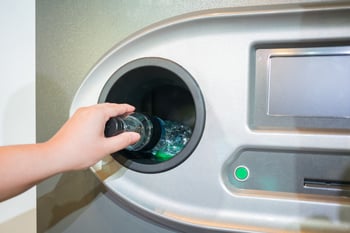Sustainability is at the forefront of the fashion industry, with increasing pressures from consumers and the Government, requiring brands and retailers to step up and do more to protect the environment and slow down climate change. In order for brands and retailers to make this happen, sustainability needs to be integrated in all aspects of the business, from the supply chain to the office – because it makes not only environmental sense but also business sense. Here’s 5 ways you can make your office greener, according to Edie’s “The Green Office” guide:
1. Boardroom buy-in
Sustainable change needs to be driven from the top, down, incorporating “doing the right thing” into the heart of the business. This makes presenting a persuasive case for action and getting your boardroom to “buy-in” vital to any successful sustainability strategy.
There are a number of ways sustainability can benefit a business, here’s a few that’ll definitely spark your board’s interest:
- Improved brand image and competitive advantage
- Increased productivity and reduce costs
- Increased business ability to comply with regulation
- Attract employees and investors
- Reduce waste
- Make shareholders happy
Many organisations underestimate how much waste is costing; it could be as high as 4% of turnover. Systematic action could save between £400 and £1,000/year for every employee. With the right measures, waste costs can easily be reduced to only 1% of turnover – often with little or no investment.

2. Staff engagement
Not only do you need your boardroom to “buy-in” but your employees also need to be invested, in order for your sustainability strategy to be in for the long haul. If you’re a business leader, why not consider a to move towards a worker-led CSR strategy? This could be a great way for you to obtain employee engagement and backing. Edie suggest other staff engagement, such as holding awareness days or perhaps even establishing a team of green champions.
Where possible demonstrate business cost savings, but more importantly indirect benefits that are important to the individual, such as improved health and well-being from taking the stairs instead of the lift, or from the use of more natural light at workstations.
Edie
3. Focus on hotspots
 Turning your office green isn’t an overnight fix and you shouldn’t expect it to be either. The aim of identifying “hotspots” is to highlight where your business could do better and the changes that’ll have the biggest immediate payback. Once you’ve identified them, collaboration between your team, relevant third-party businesses and organisations, is key to successfully conquering them.
Turning your office green isn’t an overnight fix and you shouldn’t expect it to be either. The aim of identifying “hotspots” is to highlight where your business could do better and the changes that’ll have the biggest immediate payback. Once you’ve identified them, collaboration between your team, relevant third-party businesses and organisations, is key to successfully conquering them.
There are four key areas where offices can significantly reduce their impacts: energy saving, waste prevention, sourcing sustainable paper, and green procurement.
Edie
Setting yourself and your team a multitude of targets all at once isn’t a “sustainable” approach nor a realistic one, after all multitasking doesn’t work and it certainly isn’t efficient.
4. Benchmarking performance
Once you’ve identified your “hotspots” the next step to creating and implementing a successful sustainability strategy is to identify exactly what you want to achieve and how you plan to do it.
Measuring against KPIs at regular intervals will give you an indication as to whether your business is heading in the right direction and your return on investment. Not only this but according to a survey by Futerra, 88% of respondents in the USA and UK would like brands to help them be more environmentally friendly and ethical in their daily life. The ability to quantify your progress and share it with your customers is a great way to boost your brand image.
5. Technology and innovation
It can be hard to measure and enforce sustainability in a business, especially if you can’t confidently confirm who is supplying you. Luckily there are technologies available today that have the power and capacity to capture data in a way that humans can’t. Did you know that with Segura, you can track all of your orders and suppliers in one centralised location?
 Other technologies such as “reverse vending machines that accept used cups and empty drinks containers provide ready-made recycling solutions for key waste streams”, or perhaps an investment in “clean air” inspired by Stella McCartney’s store in London with the “cleanest air”, have the power to create a happier, healthier, environmentally friendly workplace. An investment in technology and innovation is an investment in your business.
Other technologies such as “reverse vending machines that accept used cups and empty drinks containers provide ready-made recycling solutions for key waste streams”, or perhaps an investment in “clean air” inspired by Stella McCartney’s store in London with the “cleanest air”, have the power to create a happier, healthier, environmentally friendly workplace. An investment in technology and innovation is an investment in your business.
It’s apparent that “going green” has become an incredibly important move for businesses, with today’s conscious consumers. The demand for businesses to act more ethically responsible and become more sustainable, has grown with increased concerns around climate change. As experts predict that this is only going to rise, businesses need to set themselves apart from their competition, and a watertight sustainability strategy could be a great way to do this.


